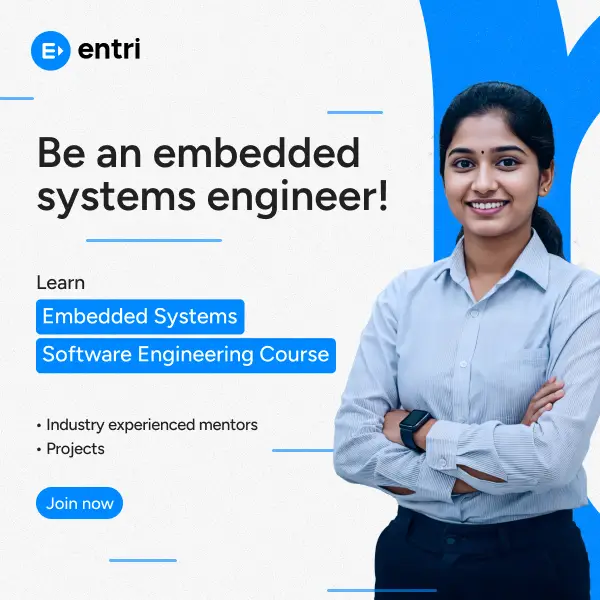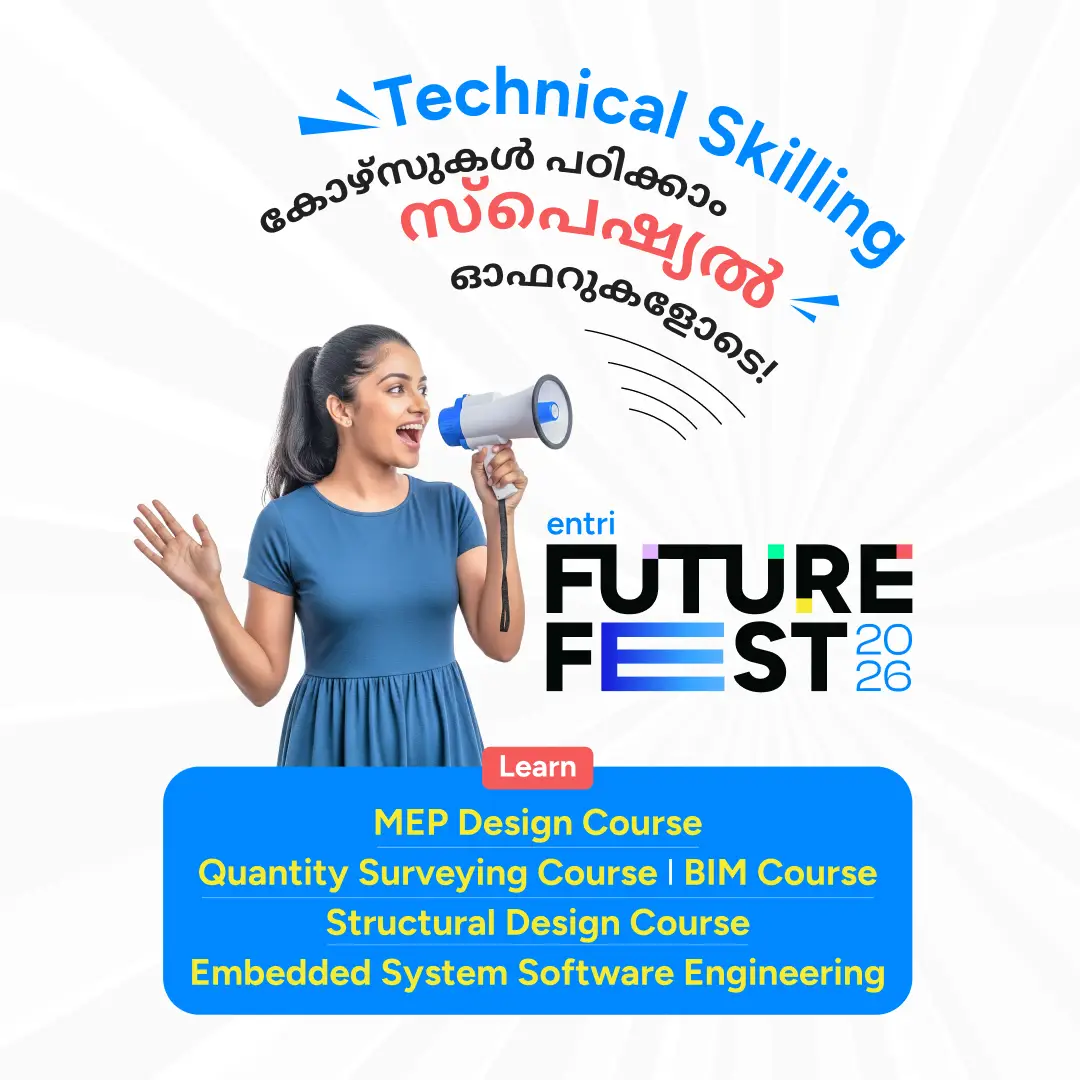Table of Contents
Embedded systems are the unseen backbone of modern technology – powering everything from smartphones and smartwatches to automobiles and industrial robots. As demand for skilled embedded engineers continues to grow, mastering embedded C programming, microcontrollers, RTOS, and IoT firmware development has become essential for aspiring engineers.
Entri’s Embedded Systems Software Engineering Course is designed to help you build these in-demand skills step by step – through real hardware projects, practical coding exercises, and hands-on experience with microcontrollers like AVR, STM32, and ESP32.
Here are some of the most frequently asked questions about the course to help you understand its structure, modules, and career benefits.
What is the Entri Embedded Systems Software Engineering Course about?
This course provides comprehensive, hands-on training in embedded C programming, microcontroller interfacing, RTOS, IoT firmware development, and Embedded Linux. It equips you with practical skills required to design and develop embedded software for real-world applications.
Who is this course suitable for?
This program is ideal for students, electronics and computer science graduates, or professionals looking to transition into embedded systems, IoT, or firmware engineering roles.
Do I need prior programming knowledge to join?
No prior experience is required. The course begins with fundamental programming concepts in Embedded C before progressing to advanced modules like RTOS, IoT, and Embedded Linux.
What development tools will I learn to use?
You’ll gain hands-on experience with AVR Studio, STM32CubeIDE, GCC, and Git. These are industry-standard tools for developing, compiling, debugging, and version-controlling embedded software.
Which microcontrollers are covered in the course?
You’ll work with:
- AVR (ATmega328P) for foundational concepts
- STM32F4 (ARM Cortex-M4) for advanced bare-metal programming
- ESP32 for IoT and wireless firmware development
What topics are included in the AVR Microcontroller module?
You’ll learn register-level programming, GPIO and PWM control, interrupt handling, and communication protocols like UART, I2C, and SPI - all without relying on external libraries.
What is taught in the STM32F4 ARM Cortex-M4 module?
This module covers the Cortex-M4 architecture, debugging with JTAG/SWD, and manual register-level programming. You’ll also complete a data acquisition system project.
Will I learn Real-Time Operating Systems (RTOS)?
Yes. You’ll explore the fundamentals of RTOS architecture, task creation, scheduling, semaphores, and inter-task communication, followed by a multitasking project implementation.
Does the course include IoT and wireless development?
Yes! You’ll use ESP32 to build Wi-Fi and Bluetooth Low Energy (BLE) based applications, and learn secure IoT communication using MQTT and HTTP protocols.
Will I get exposure to Embedded Linux?
Absolutely. You’ll get introduced to shell scripting, build systems, cross-compilation, and basic kernel module programming - essential skills for modern embedded developers.
Are there advanced topics included?
Yes, advanced modules cover Edge AI integration and system-level performance optimization to help you stay ahead in the embedded technology landscape.
Does the course include real-world projects?
Definitely. You’ll work on Capstone Industry Projects such as:
How is the course structured?
The course is divided into Beginner, Intermediate, and Advanced stages, progressing from basic microcontroller concepts to complex real-time and IoT systems. 14. Is interview preparation part of the course? Yes. The course includes technical and HR interview preparation, mock sessions, and expert feedback to improve your confidence and employability.
What skills will I have by the end of the course?
By completion, you’ll be able to:
What are the career opportunities after this course?
After completion, you can apply for roles like:
What are the hardware and software requirements?
A PC with a stable internet connection is needed. For practice, it’s recommended to have boards like Arduino (ATmega328P), STM32F4 Discovery, or ESP32.
How is this course different from other embedded courses?
Unlike theory-based courses, Entri focuses on bare-metal coding, hands-on projects, and real-world applications, ensuring that you become job-ready with practical skills.
Will I receive a certificate?
Yes. Upon successful completion of the course and projects, you’ll receive an industry-recognized certificate from Entri.
Can this course help me switch careers to embedded systems?
Yes, even if you’re from a non-embedded background, the structured curriculum helps you transition smoothly into the embedded domain by covering everything from the basics to advanced topics.
What is the course fee?
The course fee may vary based on offers and duration. You can check the latest fee details on the Entri App under the Embedded Systems Software Engineering Course section or contact Entri’s support team for updated pricing.
What is the duration of the course?
The Embedded Systems Software Engineering Course is typically designed to be completed in 6 months, depending on your learning pace and project involvement. Learners can progress flexibly with recorded lessons and mentor-led sessions.
Conclusion
Entri’s Embedded Systems Software Engineering Course is a complete learning journey that takes you from basic C programming to advanced firmware and IoT development. With structured learning paths, real-time projects, and career-oriented training, this course is perfect for anyone looking to step confidently into the embedded systems industry.










